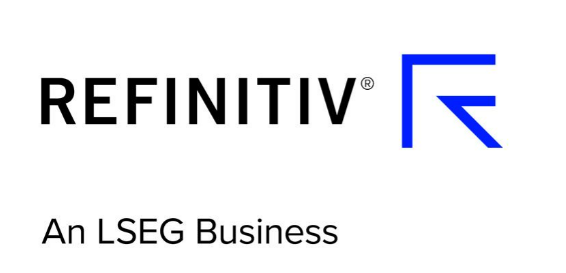
Source: Sharecast
The White House confirmed Trump will meet Xi next Thursday after addressing the APEC CEO Summit, fuelling optimism over potential progress in trade relations.
“Asian stock markets saw a spirited rally on Friday, driven by a surge in technology shares after a meeting between Donald Trump and Xi Jinping eased fears of a potential trade war,” noted Patrick Munnelly, market strategy partner at TickMill.
“The MSCI index tracking Asian markets climbed about 0.5%, continuing its impressive run this year that has propelled it to record highs.
“Among the standout performers were tech stocks, with South Korean chipmaker SK Hynix soaring by as much as 6.9%.”
Kospi reaches another record as most markets advance
South Korea’s Kospi surged 2.5% to a record 3,941.59, driven by strong gains in Isu Chemical, up 26.4%, Posco Future M, up 18.92%, and LF Co, which rose 17.61%.
The finance ministry in Seoul said it stood ready to intervene in the foreign exchange market to curb volatility in the won-dollar trade.
Munnelly added that “optimism extended beyond Asia, as US and European equity futures also posted gains.
“Intel shares jumped during post-market trading on Thursday in New York, buoyed by an upbeat revenue forecast.”
Japan’s Nikkei 225 rose 1.35% to 49,299.65, while the broader Topix index added 0.48% to 3,269.45.
Gains were led by Sumitomo Heavy Industries, up 8.38%, Taiyo Yuden, up 6.75%, and SoftBank Group, up 5.69%.
Fresh inflation data showed Japan’s core rate accelerated in September, marking the first increase since May and aligning with economists’ expectations.
Munnelly noted that “Japan's primary inflation gauge has climbed, driven by soaring energy prices.
“This development sets the Bank of Japan on a path toward further interest rate hikes while also presenting a significant challenge for newly-appointed prime minister Takaichi.”
Chinese markets also advanced, with the Shanghai Composite up 0.71% to 3,950.31 and the Shenzhen Component climbing 2.02% to 13,289.18.
Tech shares led the rally, as Founder Technology Group, Shanghai Koal Software, and Universal Scientific Industrial Shanghai all rose by around 10%.
Munnelly said that “in China, semiconductor stocks spearheaded the rally, reflecting the nation’s growing focus on technological independence.
“The Star 50 Index, heavily weighted toward tech companies, surged over 3%.”
Hong Kong’s Hang Seng Index gained 0.74% to 26,160.15, buoyed by SMIC, which climbed 8.04%, alongside China Hongqiao Group and WuXi AppTec, up 4.29% and 3.95%, respectively.
Elsewhere, Australia’s S&P/ASX 200 slipped 0.15% to 9,019.00 after Reserve Bank of Australia governor Michele Bullock said the central bank would review upgrades to its interbank settlement system next year.
Losses in Newmont Corporation, down 4.42%, Virgin Australia, down 4.01%, and Magellan Financial Group, down 3.73%, weighed on the index.
New Zealand’s S&P/NZX 50 inched 0.11% higher to 13,391.59, supported by Eroad, Skellerup, and Vista Group International, which gained 7.77%, 3.85%, and 3.65%, respectively.
In currency markets, the dollar was last up 0.26% on the yen to trade at JPY 152.96, as it advanced 0.24% against the Aussie to AUD 1.5393, and gained 0.13% on the Kiwi, changing hands at NZD 1.7410.
Oil prices were little changed, with Brent crude futures last down 0.03% on ICE at $65.97 per barrel, and the NYMEX quote for West Texas Intermediate easing 0.02% to $61.78.
Munnelly observed that “oil prices edged lower ahead of US inflation data, while the dollar index ticked upward and gold prices retreated.”
Inflation accelerates in Japan, manufacturing sector contracts
In economic news, Japan’s inflation accelerated in September, underscoring the challenges facing new prime minister Sanae Takaichi as she looked to steady an economy struggling with rising living costs and weak industrial momentum.
Core inflation, which excludes fresh food but includes energy, rose to 2.9% from 2.7% in August, matching economists’ expectations and marking the first uptick since May.
Headline inflation also climbed to 2.9%, remaining above the Bank of Japan’s 2% target for the 41st consecutive month, while the “core-core” measure - excluding both food and energy - eased to 3% from 3.3%.
Rice inflation, which surged earlier this year, slowed sharply to 49.2% from 69.7%.
Analysts said the figures highlighted the political and policy pressures confronting Takaichi, who assumed office amid widespread concern over the cost of living.
Reuters reported that Takaichi was preparing a JPY 13.9trn stimulus package to help households and support growth industries, which could be unveiled as soon as next month.
Meanwhile, Japan’s manufacturing sector contracted at its fastest pace in 19 months, according to the S&P Global flash purchasing managers’ index (PMI), which fell to 48.3 in October from 48.5 in September.
The reading marked the fourth consecutive month below the 50 threshold separating expansion from contraction, as new orders weakened further despite a modest rebound in exports.
Service sector growth also lost momentum, with the flash services PMI easing to 52.4 from 53.3, pulling the composite index down to 50.9, its slowest expansion in five months.
Reporting by Josh White for Sharecast.com.



